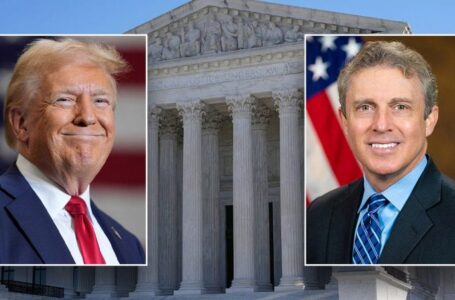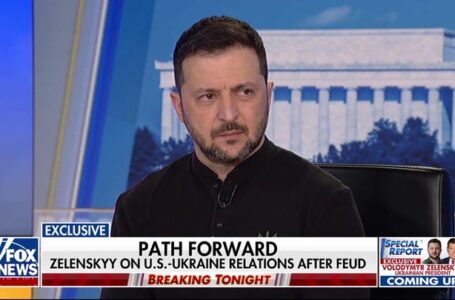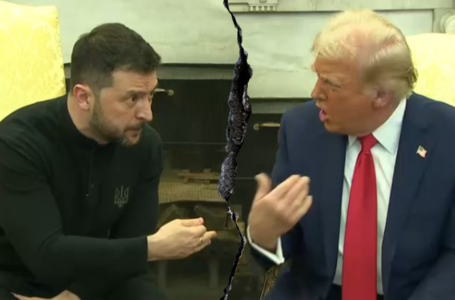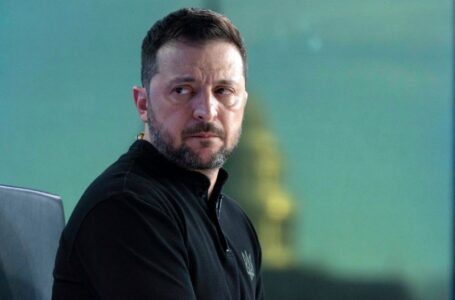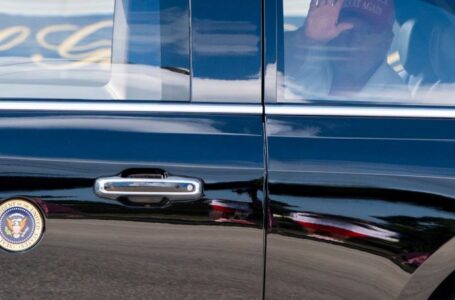JONATHAN TURLEY: Judge’s Special Counsel ruling may be the setback Trump admin was looking for
Iranians vote for a new president under the shadow of conflict and economic woes


Under the specter of conflict with Israel, a struggling economy and social discontent, Iranians headed to the polls on Friday for snap presidential elections that could be the most important for the country in decades.
The sudden death of President Ebrahim Raisi in a recent helicopter crash, alongside Foreign Minister Hossein Amir-Abdollahian and other officials, has left a leadership void. Raisi, a hardline regime loyalist, was widely regarded as a leading candidate to replace Iran’s Supreme Leader, 85-year-old Ayatollah Ali Khamenei, who holds ultimate authority over all state matters.
It is also the first presidential election since the death of Mahsa Amini in the custody of the country’s notorious morality police in 2022, an event that sparked the largest protests since the regime’s founding in 1979. The vote takes place amid deteriorating relations with the West, an advancing Iranian nuclear program, and an increasing risk of direct war with Israel. Just two months ago, Iran and Israel exchanged fire for the first time as the Gaza conflict widened, and Israel is now preparing for a potential second front with Hezbollah, Iran’s primary regional proxy, in Lebanon.
Three conservatives are vying with a single reformist candidate for the country’s top elected seat, after dozens of other candidates were barred from standing. Of those running, Masoud Pezeshkian, 69, a reformist lawmaker and former health minister, Saeed Jalili a hardline security adviser and nuclear negotiator, and Mohammad Bagher Ghalibaf, the conservative speaker of the Iranian parliament, are widely considered the frontrunners in the first round of elections. The final candidates were pre-selected by Iran’s Guardian Council, which reports directly to Khamenei.
Some polls have shown increasing popularity for Pezeshkian, with the rest of the conservatives splitting the vote. During nationwide protests against Amini’s death in 2022, Pezeshkian said in an interview with Iran’s IRINN TV: “It is our fault. We want to implement religious faith through the use of force. This is scientifically impossible.”
On Thursday, two conservative candidates, Amirhossein Qazizadeh-Hashemi and Alireza Zakani, withdrew from the race to help consolidate the hardline vote. Qazizadeh-Hashemi urged other candidates from the “revolution camp” to do the same to secure a hardliner victory.
Any candidate who wins at least 50% of votes in the first round will be elected president, otherwise the two top-ranking candidates will face off in a second round a week later.
Who are the top candidates?
Mohammad Bagher Ghalibaf: The speaker of parliament and former mayor of Tehran, he served approximately 25 years in the IRGC and worked for many years in law enforcement. He is known as a fierce establishment loyalist.
Masoud Pezeshkian: A former health minister, he is a reformist lawmaker and a trained heart surgeon. He has been vocal against the crackdown on pro-democracy protests and the violence perpetrated by the morality police.
Saeed Jalili: An ultraconservative hawk, he has long served as a top security adviser to Khamenei and is a former IRGC soldier from the Iran-Iraq war. As the lead negotiator of the 2015 nuclear agreement, he spearheaded Tehran’s efforts to secure sanctions relief.
“These are nothing like free and fair elections, and only those who’ve already pledged absolute loyalty to Khamenei and the Islamic Republic can run,” said Arash Azizi, an Iranian writer and fellow at the Center for Middle East and Global Order (CMEG), a Berlin-based think tank. “But there are still very important differences between the three main candidates. Each of them present certain problems for Khamenei.”
The top contenders are children of Iran’s 1979 Islamic Revolution, likely shaped by their experiences fighting the then US-backed Saddam Hussein regime in the bloody, decade-long war with their neighbor Iraq, as well as careers serving the Iranian state.
But voters’ choice between either of the conservatives or their reformist co-candidate will steer a different path forward for the country.
“What we have seen in this election compared to (the) previous one (in 2021), is that in the last couple of days there has been a degree of energy for the election,” said Trita Parsi, a Washington-based Iran analyst and executive vice president of the Quincy Institute, suggesting the participation rate may end up being higher than previous elections.
The Iranian electoral process has been marred by voter apathy of late, causing embarrassment to an establishment that has relied on high voter turnout to bolster its democratic credentials and popular legitimacy.
Elections in March for the parliament and the Assembly of Experts, an oversight body responsible for selecting the Supreme Leader’s successor, recorded the lowest turnout since the Islamic Republic’s founding, despite government efforts to rally voters ahead of the ballot.
Khamenei urged Iranians to head to the polls and vote after he cast his ballot in the election on Friday morning.
“People’s participation is part of the essence of the state and continuation of the existence of the Islamic Republic and its status in the world is tied to people’s participation”, he said.
Despite some momentum, however, low voter turnout “remains a distinct possibility, fueled by widespread disillusionment and economic hardships,” said Sina Toossi, an Iran analyst and senior fellow at the Center for International Policy in Washington, DC.
“Many Iranians feel disenfranchised and skeptical about the electoral process, doubting its ability to bring about meaningful change, particularly in light of the government’s violent repression of popular protests in recent years,” he said. “A substantial number of Iranians say they will boycott the elections, including prominent civil society activists and political prisoners like Nobel Laureate Narges Mohammadi.”
‘Iranians need simple things’
At Shiroudi stadium in Tehran, there was an ebullient atmosphere Wednesday as supporters of the conservative Ghalibaf gathered for his final campaign rally.
Several thousand Iranians crammed into the indoor arena, mobbing the candidate as he entered, chanting: “We salute Raisi, we say hello to Ghalibaf.”
Economic concerns are foremost on the minds of many voters.
In June, inflation in Iran stood at 36.1%, straining wallets across the country. Although down from highs exceeding 45% last year, the country’s annual inflation rate hasn’t dipped below 30% in over five years. This persistent inflation follows the Trump administration’s withdrawal from the 2015 nuclear agreement and the subsequent reimposition of heavy sanctions on the Islamic Republic.
Ghalibaf has been determined in his attacks on the 2015 nuclear deal and paths towards rapprochement with the West, pinning much of the country’s economic woes on Iran’s Western enemies.
“The first thing people expect is economic development. There is no doubt that this development can happen through the path of elections,” Ghalibaf shouted to the crowd, echoing promises from his campaign.
Draped along the walls were campaign pledges of food on the table of all Iranian households and free land for homeless families.
“Iranians need simple things, a good economy, good relations with other countries,” she said, adding that she trusted Pezeshkian to deliver on them.
‘A small window of hope’
As night fell at the nearby Heidarnia stadium, supporters of Pezeshkian gathered to hear him speak, with many focused on improving Iran’s international relations.
Around her, the crowd was on edge, an urgent energy rippled across the stadium. An hour before, organizers abruptly announced the event had been cancelled, and police blocked the gate.
Despondent supporters poured into nearby streets; their chants, like the mood, were resolute: “Our vote is one word: Pezeshkian.”
Cheers surged through the crowd of several thousand Pezeshkian supporters when they were later allowed into the stadium but the incident in the final hours of his campaign stung his assembled voters.
Parsi, the Iran expert, suggested that enthusiasm for this vote may stem from it being a snap election.
“No one expected this to happen,” he said, noting that Raisi’s unexpected death might be creating a public perception that “perhaps the regime doesn’t have the capability of controlling this election,” as it has in the past.
Relations with the West
Iran’s foreign policy direction is largely steered by Khamenei, and the president’s role is principally domestic. However, the future president and his foreign minister will play a crucial role in the working relations with the international community.
“Pezeshkian’s victory won’t be bad news for Khamenei and, in fact, might even be the best outcome since he will be a weak president with a smaller base and thus easier to control,” said Azizi.
Pezeshkian’s key ally is former Foreign Minister Javad Zarif. If the US-educated Zarif, who oversaw the warmest recent period of ties with Washington, returns in an official capacity, he may provide a conduit for an easing of tensions with the West.
However, this week Khamenei condemned those chasing improved relations with the West – in an apparent implicit attack on Pezeshkian and Zarif.
He blasted thinking that, “all the ways of progress pass through the US.” Politicians who think they cannot progress without being in the US’ favor “will not manage (the country) well,” Khamenei was cited as saying in Iranian state media.
Even if Tehran isn’t expected to pivot towards the West anytime soon, the prospect of an uncompromising Trump presidency and the already bloody tensions in the Middle East make any improvement in relations crucial.
Moreover, even if a more Western-friendly candidate takes power, a shift in Iran’s foreign relations is not guaranteed, as goodwill gestures toward the West may not be reciprocated.
“A more Western-oriented administration in Iran may not find a willing partner in Washington under Biden,” Parsi said. “It takes two to tango.”

